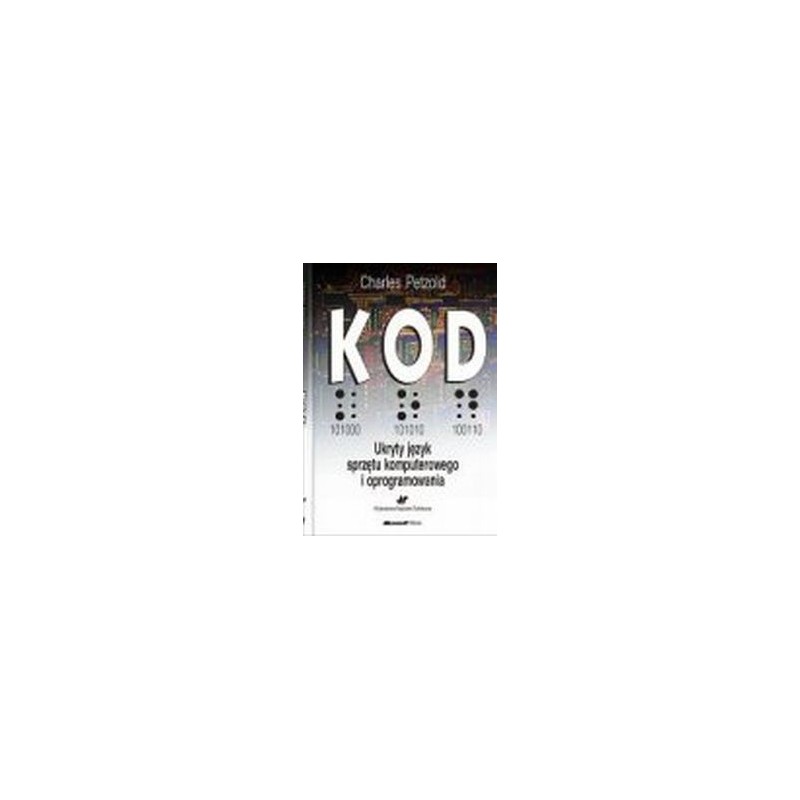- Out-of-Stock



Petzold Charles
This is an extraordinary book in the field of computer science and computer technology. It covers a wide range of topics - from the transmission of information signals and the elementary way of communicating using code characters to create complex computational systems using integrated circuits with a high degree of integration.
The author describes the main electronic circuits of the computer: combinational circuits, arithmetic circuits, meters, memories and mains, and explains how to build a processor from these elements. In the architecture of the processor, it clearly distinguishes the operating and controlling parts. He discusses the concept of the program. Using examples of programs in assembler, he introduces the reader to the issues of programming in a low-level language. He deals with the operating system, compilers and interpreters, low and high level languages. It discusses object-oriented software, graphic programming languages, image processing and transmission, as well as sounds, data compression systems and programming languages independent of hardware. By addressing these topics, he explains what new methods of human communication are. He explains what the system of information exchange between people and machines means.
The book is written very colorfully and accessible. Reading her will give pleasure to a wide range of readers. This book will be used by students who will differently perceive the reality described in the professional literature, as well as specialists for whom reading it will be a real intellectual adventure.
Table of Contents
Preface
Chapter 1. Best friends
Chapter 2. Codes and combinations
Chapter 3. Braille and binary codes
Chapter 4. Anatomy of the flashlight
Chapter 5. Can you see around the corner?
Chapter 6. Telegraphs and relays
Chapter 7. Our ten numbers
Chapter 8. The alternative of ten
Chapter 9. Bits "bit by bit"
Chapter 10. Log and connectors
Chapter 11. Frames
Chapter 12. Binary totalising machine
Chapter 13. What about subtraction?
Chapter 14. Back pressure and flip-flops
Chapter 15. Bajty and sixteenth
Chapter 16. Building of memory
Chapter 17. Automation
Chapter 18. From the abacus to the microchips
Chapter 19 Two classic microprocessors
Chapter 20. SECRET and character coding
Chapter 21. Traveling by bus
Chapter 22. Operating system
Chapter 23. Fixed position, variable position
Chapter 24. High and low level languages
Chapter 25. Graphic evolution
thanks
Bibliography
Index
No product available!
No product available!
SATA line for Banana Pi only. Connects a 2.5 inch Hard Disk to your Banana Pi Computer
No product available!
Mains power supply 5V, 1A, cable terminated with a mini-USB plug. DC / 230V AC
No product available!
No product available!
No product available!
Development board with SAMD21 microcontroller (ARM Cortex® M0+), 8 I/O lines, 12 PWM channels, micro-USB. The board is equipped with the CMWX1ZZABZ module enabling the implementation of communication in Lo-Ra networks. Arduino MKR WAN1300 ABX00017
No product available!
No product available!
HumidIcon™ Digital Humidity/Temperature Sensor, I2C, hydrophobic filter, SOIC8, Honeywell, RoHS
No product available!
No product available!
Kintex™-7 FPGA ACDC 1.0 Base Board (Acquisition, Contribution, Distribution and Consumption) By Inrevium™, RoHS
No product available!
No product available!
No product available!
No product available!
Rectangular LED diode 5x2 mm YELLOW milk diffused, angle 160 degrees; light intensity 60 mcd (20mA) (2.1V); df 588nm
No product available!
No product available!

Petzold Charles
